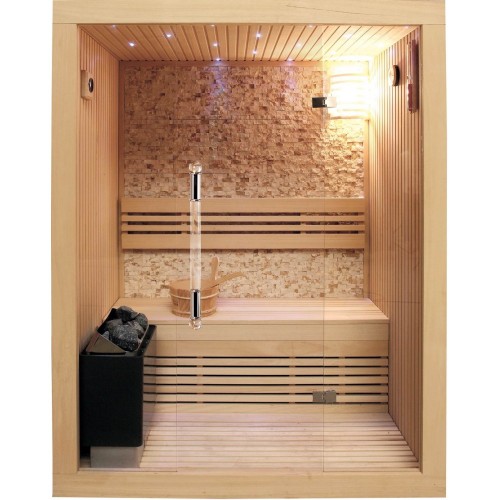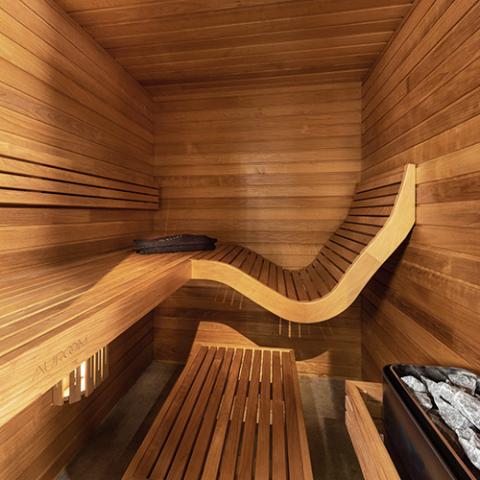8 Easy Facts About Traditional Sauna Described
8 Easy Facts About Traditional Sauna Described
Blog Article
How Traditional Sauna can Save You Time, Stress, and Money.
Table of ContentsThe 3-Minute Rule for Traditional SaunaThe Definitive Guide to Traditional SaunaThe Greatest Guide To Traditional SaunaThe Best Guide To Traditional SaunaFascination About Traditional Sauna
Power cost savings is one point to consider for people that prepare on using their sauna frequently. For a traditional sauna, bathers typically need to wait for 30-40 mins for the area to pre-heat before entering. Infrared saunas, on the other hand, generally reach their suitable temperature in around 15 minutes.That indicates that in an infrared sauna, bathers can start appreciating their sauna instantly. One difference in between the two types of sauna that is usually overlooked is the social experience.
Take into consideration exactly how several people will be utilizing the sauna before making your decision. Including a sauna to your home can be among one of the most exciting and rewarding choices you'll ever before make. Regular sauna use will certainly enhance your flow, preserve healthier skin, assistance kidney function, lower high blood pressure, enhance brain function, and a lot more
Try a sauna today and uncover some of the amazing advantages for yourself!.
A Biased View of Traditional Sauna
Infrared and traditional completely dry saunas are both popular alternatives for those seeking relaxation and therapeutic advantages. There are some essential differences between the 2 types of saunas that should be thought about before making a selection. Conventional dry saunas utilize heated rocks to generate vapor, while infrared saunas make use of infrared heating systems to straight heat the body
Elements such as warmth tolerance, wanted level of detoxification, and overall wellness ought to be taken right into account when determining which kind of sauna to make use of. Infrared saunas are a kind of sauna that utilize infrared light to heat up the body directly, rather than heating up the air around the body like typical saunas.
The temperature level in an infrared sauna is typically less than in a typical sauna, with temperature levels ranging from 120F to 150F. Infrared saunas use a variety of advantages that make them an attractive choice for those wanting to boost their health and wellness and wellness. A few of the advantages of infrared saunas consist of: Infrared saunas make use of reduced temperature levels than traditional saunas, which can make them a lot more comfy for those that locate high temperature levels difficult to endure.

Infrared saunas have been revealed to assist the body get rid of toxic substances with sweating. Sweating can additionally help to enhance skin health by eliminating pollutants and dead skin cells.
The Main Principles Of Traditional Sauna

With their lower temperatures, deep penetration, and variety of health and wellness benefits, infrared saunas are a terrific way to loosen up, unwind, and boost your general health and wellness. Standard completely dry saunas have actually been around for centuries and are still preferred today. They are normally heated up with wood, gas, or electrical power and have low humidity levels.
There are several benefits to making use of a traditional dry sauna. Below are a few: Leisure: The high temperature and reduced moisture in standard completely dry saunas can help kick back the muscular tissues and minimize stress and anxiety levels. Cleansing: Sweating in a sauna can aid eliminate toxic substances from the body, which can boost total wellness.
More About Traditional Sauna
When it comes to saunas, there are 2 main kinds of heating techniques: traditional and infrared. Typical saunas use warmed air to warm the body, while infrared saunas make use of infrared radiation internet to permeate the skin and warm the body from within. One of the major distinctions in between the 2 approaches is the type of warm they produce.
Standard saunas heat up the air, which after that warms the body view via convection. Infrared saunas, on the various other hand, warm the body straight with radiation.
In terms of energy performance, infrared saunas are typically a lot more effective than conventional saunas due to the fact that they require much less power to run. They additionally warm up a lot more promptly, so they can be used for much shorter sessions. When it comes to the effects on the body, both sorts of saunas have actually been revealed to have advantages.

Traditional Sauna Fundamentals Explained
Both sorts of saunas supply distinct advantages and disadvantages that should be thought about prior to deciding. The selection in between an infrared sauna and a traditional completely dry sauna greatly relies on personal preference and the preferred benefits. Those that choose an even more comfortable, lower her latest blog temperature level setting may favor an infrared sauna, while those that are trying to find intense warmth and a conventional sauna experience may choose a traditional dry sauna.

Report this page